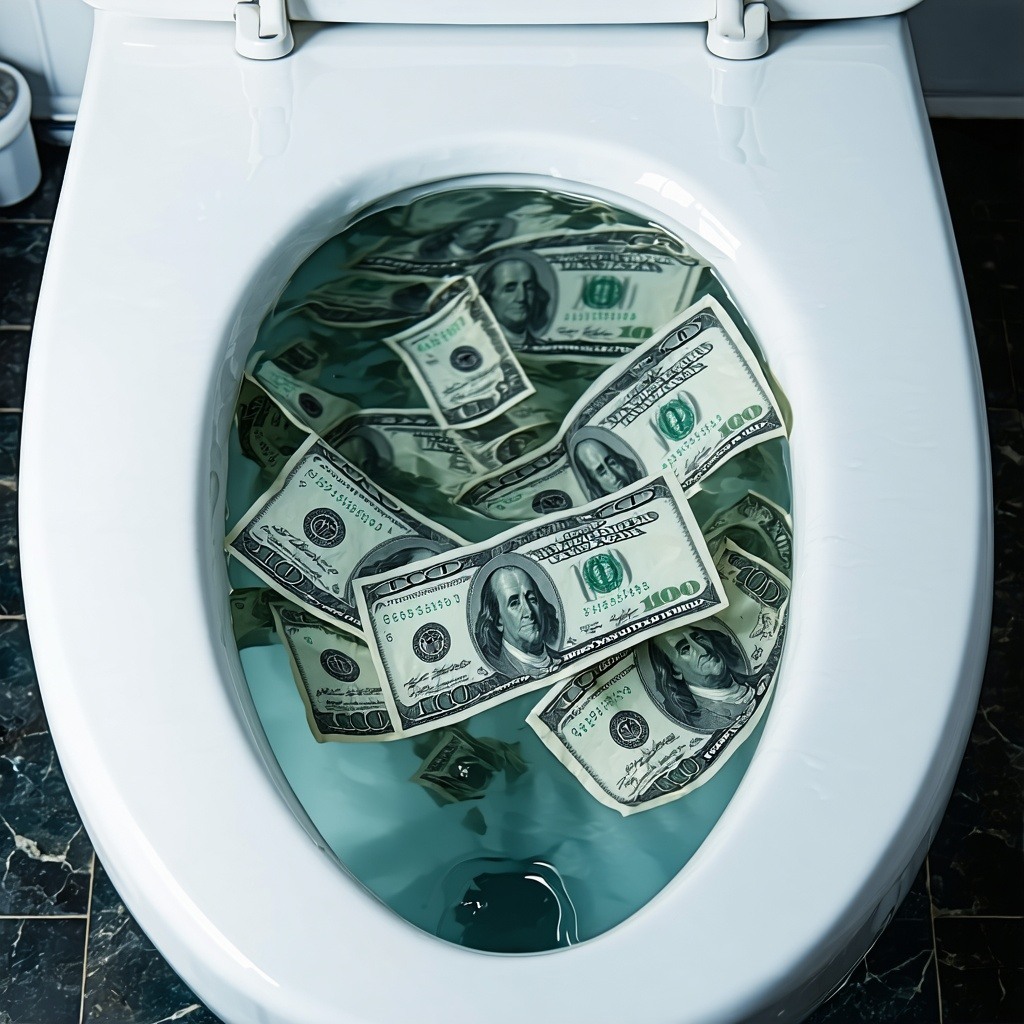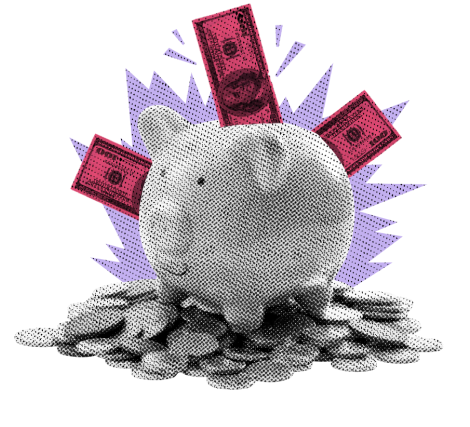
The latest tariff war escalates into full-blown market anxiety—with Apple and bonds caught in the crossfire.
KEY TAKEAWAYS
- The Trump administration enacted a 104% tariff, severely impacting Apple and market sentiment.
- Apple, which produces the majority of its products in China, was hit hardest, dragging major indexes down.
- Treasury yields surged, despite rising recession fears, contradicting normal flight-to-safety behavior.
- Some experts called the bond selloff “normal deleveraging,” but the indiscriminate selling says otherwise.
- The market’s volatility reflects deep uncertainty, with hopes that this aggressive tariff tactic leads to resolution.
MY HOT TAKES
- Tariffs are economically destructive, no matter who pushes them.
- The Trump administration’s chaotic rollout style magnifies market volatility.
- The Treasury market’s reaction suggests deeper unease than what officials admit.
- Apple’s vulnerability shows the real cost of globalization—and of policy whiplash.
- The bond market is flashing warning signs that can’t be ignored or explained away with spin.
- You can quote me: “The Band-Aid is off! 🥹 Come on guys, GET IT DONE!”
Band-Aid rip. If you have been reading or watching me for a bit, you are well aware that I am no fan of tariffs. Politics aside, it’s just bad policy. The numbers prove it, and you don’t have to get too far into your freshman economics textbook to understand why. That said, we are her now. President Trump promised tariffs and, boy, oh boy, did he deliver. Aside from the economic disaster that will ensue in response, the market has clearly placed its vote on the tariffs, along with the execution.
Tariffs themselves are a problem, but the President’s style of shock and awe, carpet bombing, scorched earth, or whatever other military analogy you want to use, has clearly not sat well with the markets that go between throwing tantrums about the now-greater probability of recession and that constant feeling of not knowing what will come out of the administration next. Yesterday afternoon, we got both at the same time.
Stock indexes were fragile at the start of yesterday’s session, despite the sea of green that greeted traders over their morning donuts. A trained eye could sense the tension below what appeared to be a relief rally. We have seen this before, and caution was the prescription. It didn’t take long for markets to start to lose steam. Bond yields were ripping higher and no one seemed to be concerned at first. Later in the day, a “leak” that Chinese reciprocal taxes would be shifted to 104%, was not forcefully rejected and traders began to imagine what pain such a levy would cause. Soon enough, the 104% tariff would be confirmed by the White House.
Quick math would reveal the utterly painful, if not deadly blow that the tariff would cause THE LARGEST COMPANY IN THE WORLD. That’s right, Apple, the tech gadget darling which only has 23% of its manufacturing facilities domiciled in the US, manufactures something like 90 - 95% of its products, including iPhones, in China. More recent data suggests that roughly 10 - 12% of iPhones are manufactured in India. So, that means that, yesterday morning, as little as 90% of newly produced iPhones would be subject to a 54% cost increase/tax, but by the time the markets were entering the final hours of trading, that 90% of iPhones would be subject to a 104% tax. That was enough to send the stock tumbling, taking the S&P500 and the Nasdaq down to near-session lows at the close. The S&P 500 closed below a key round-number support of 5,000, which surely set off alarms for market technicians.
That was a tough session. Going from relief to fear, to panic all within the afternoon session. When the smoke cleared Apple, perhaps America’s, if not the world’s most recognizable and admired brands (by even Android users 😜) was knocked out of its top spot on the S&P 500. Surely there would be broader reverberations to the administration's reckless escalation and the demotion of the tech revolution's elder statesman.
But that was not the whole story. Certainly not the one that had me vexed last night–ALL NIGHT. I admitted to a reporter on my drive home that Trump’s latest move was reminiscent of his 2018 playbook, and that his last salvo was purely a negotiation tactic, and that it would likely be resolved. Like the proverb “it is always darkest before the day cometh.” I was secretly relieved that President Trump has finally ripped off the Band-Aid, and that things could only improve from there. Now back to what vexed me through the night, which was Treasury yields. In case you haven’t noticed, they have been on the climb–and on a rather steep angle at that. Painful if you were a part of that crowded trade. According to a post by finance titan Bill Ackman on X (Twitter), former finance bro and Commerce Secretary Lutnick’s firm was long lots of treasuries which would gain on an economic calamity. I have no reason to doubt Ackman, but, in reality, Treasuries are often considered the first line of defense if the financial world is going to 💩. They are considered the world’s safest investment–backed by the country’s economic might and its top-shelf military. Well, global financial markets have been swirling around in a toilet these past few days and long-dated Treasury notes and bonds have… well, been selling off.
Just minutes ago, also-former finance bro and Treasury Secretary Scott Bessent told Maria Bartaromo on a show that I WAS ON THIS MORNING 🎬, that the rise in yields (decline in price) was “normal” deleveraging. Um… really? If you look across all Treasury tenors, we can clearly see that selling appears indiscriminate. That means that folks are selling Treasuries because either a) they are panicking and selling everything that is not bolted down, b) they, global investors, are losing faith in Treasuries as a safe haven, or c) they are building up cash to jump in and buy equities on sale, or d) ‘a’ and ‘b’, or e) all of the above. That’s a tough one, but I think that the answer is more ‘d’ than ‘e’. That is disconcerting, because while, indeed they are cheap, higher yields are only going to exacerbate the economic challenges for the administration as debt service becomes more costly. Oh, and higher yields don’t help our favorite stocks either. I am not sure that I would agree with Besent on the selloff. It is definitely a “deleveraging,” but there is nothing “normal” about it. And, if Ackman was right, um, sorry, Howie, you can’t win them all.
Now, this morning when I turned my Bloomberg on at 3:00 AM, I saw a slightly lower market, but not one that was panic selling. Treasury yields, across the curve, were higher, which was still vexing me. I had some hope that, maybe, I was right in my assertion to that reporter after the close. I felt that way until I saw that China has now launched an 84% counter-tariff to the US’s counter-tariff to China’s last counter-tariff to the US’s reciprocal tariffs, and, of course, the US’s initial 20% tariff. That is a mess, getting messier by the minute. This self-inflicted pain will only end when a deal is struck with the US’s top trading partners, starting with China. The Band-Aid is off! 🥹 Come on guys, GET IT DONE!
YESTERDAY’S MARKETS
Stocks slipped, giving up earlier gains after losing steam and Trump’s decision to charge China 104% for imports into the US. Bond yields continued their climb weighing on growth equities and economists, who feared the worst–stagflation. The S&P closed below 5,000 which was a key support level.

NEXT UP
- At 2:00 Wall Street Time, the Fed will release minutes from the FOMC’s March 19th meeting. We will get some more color on the Hawks circling, but more importantly, little could the members know what would happen in its aftermath, so really, all assumptions or otherwise will be kind of moot. Don’t miss it though. 😉
- In earnings, Delta Air Lines missed on Sales but beat on eps–the company suspended full-year guidance. Suspending guidance is an invitation to get beaten up by the market and is reminiscent of the pandemic-era. Constellation Brands will announce earnings after the closing bell.
.png)

